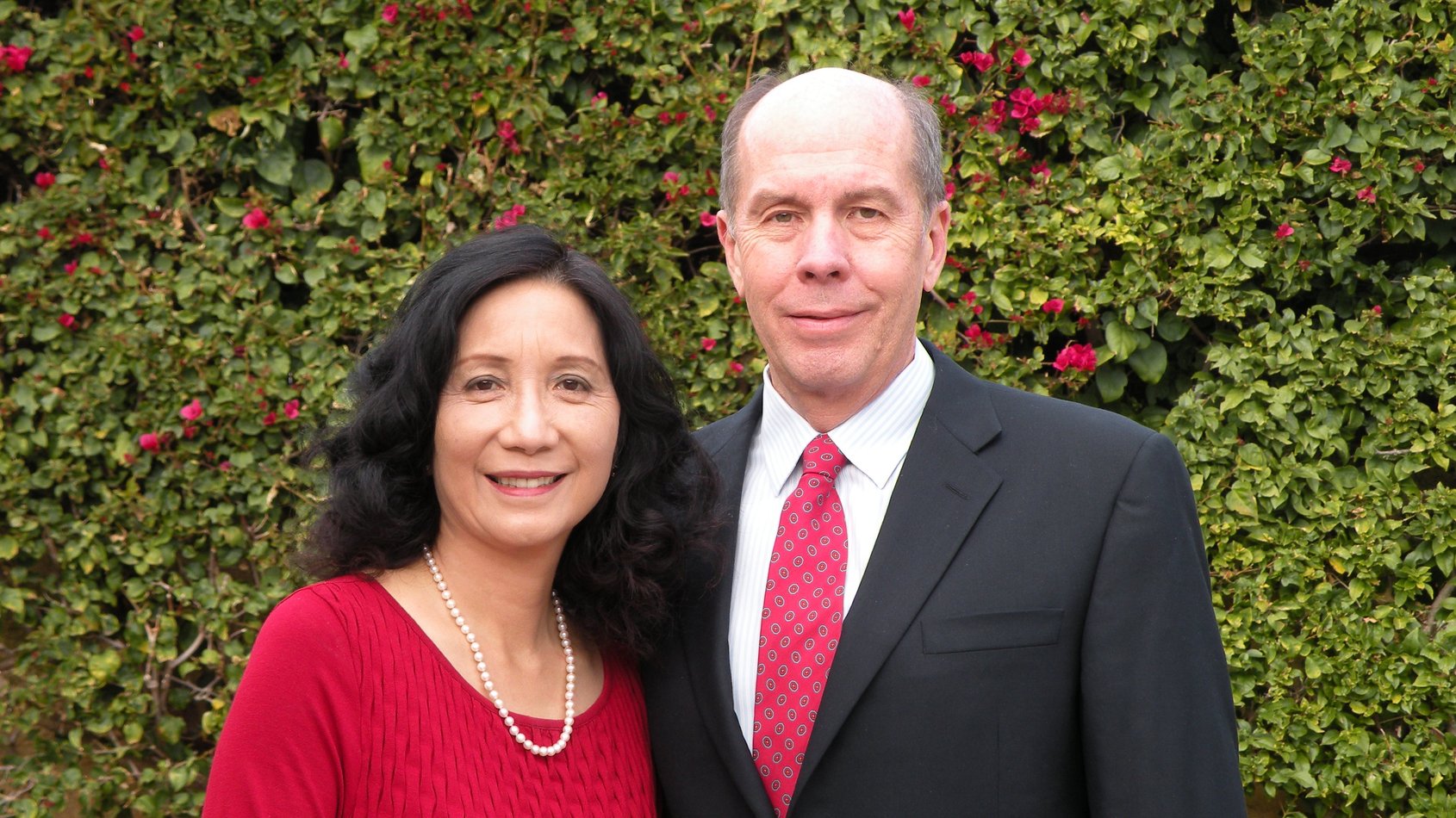Graduate Fellowships
Gift Supports Students in Charting Their Own Paths

The New Blauvelt Fellowship gives graduate students in applied physics and materials science freedom to experiment and explore.
As the digital revolution took root in the 1980s, television was still operating in an analog world, where signal interference caused static, snow, and ghosting. We owe the high-quality images we enjoy today in part to Henry “Hank” Blauvelt (PhD ʼ83), whose work in fiber optic communications helped usher in the digital television era. Blauvelt, in turn, credits Caltech for giving him the skills and the network to make these contributions.
“Caltech’s environment took me from being interested in science and technology to being an active contributor,” Blauvelt says. This happened in part, he adds, because Caltech imposed no limits on his and other graduate students’ research. “We didn’t have to make a business case for what we were doing. We could focus on things that interested us. It wasn’t until years later that I truly came to appreciate that.”
Now, Blauvelt and his wife, Caroline Blauvelt, have endowed a graduate fellowship to ensure that new generations of students will have that same freedom to experiment and explore. With a preference for those studying applied physics and materials science, the Henry and Caroline Blauvelt Fellowship enables students to follow their academic passions. The couple’s $500,000 gift was amplified by the Gordon and Betty Moore Graduate Fellowship Match, which provides $1 for every $2 donated.
Snow Removal
As a student, Hank Blauvelt developed an interest in lasers and sought out optoelectronics pioneer Amnon Yariv, Caltech’s Martin and Eileen Summerfield Professor of Applied Physics and Electrical Engineering, as his adviser. At the time, Yariv was advancing the capabilities of semiconductor lasers, which convert electrical energy into light. Yariv’s lab, including graduate student Kam Lau (BS ʼ78, MS ʼ78, PhD ʼ81) and postdoctoral scholar Nadav Bar-Chaim, focused on making the lasers move at high speeds and in room-temperature conditions.
The trio developed some of the best semiconductor lasers in the world, and in 1980 launched Ortel Corporation to commercialize their technology. Five years later, they recruited Blauvelt and tasked him with designing new applications. Blauvelt saw untapped potential with cable companies, whose weak signals caused distorted and snowy images on television screens. He went on to patent optical transmitters and receivers that enabled strong signals to travel over fiber optic links.
“By removing the noise and distortion, we could send more information to consumers,” Blauvelt says. “Over time, households demanded even faster internet access, high-definition movies, and 4k resolution.”
In 2000, Lucent Technologies acquired Ortel. Through a series of spin-offs and acquisitions, Ortel’s facilities and intellectual property now belong to Emcore Corporation. And Blauvelt is Emcore’s chief technology officer.
Atomic Precision
The Blauvelt Fellowship has already supported graduate students Melissa Li and Miles Johnson, who are studying 2-D materials (single-layer substances as thin as an atom) and their potential applications in new technologies. First-year graduate student Ivy Chen is the 2022–23 Blauvelt Fellow.
Just over a year ago, Chen, then a software engineer at Google, began researching graduate programs. Returning to school meant she would leave her comfortable tech salary and study an entirely new area of applied physics. “The Blauvelt Fellowship allowed me to successfully transition from industry back to school,” Chen says. “It is a huge burden off my shoulders knowing that I don’t have to worry about funding my first year.”
Chen works on atomic layer etching in the lab of Austin Minnich, professor of mechanical engineering and applied physics. The technique removes atom-sized layers from materials such as semiconductors and metals, which Chen likens to building a house and carving open spaces for hallways and rooms. The method could lead to the design of more powerful computing devices.
Feedback Loop
The opportunity to assist students like Chen, Johnson, and Li is why Blauvelt, who is a member of the Caltech Associates, established the fellowship. It’s also why he accepted Caltech’s invitation to serve as a visiting associate in applied physics and materials science. Blauvelt meets with students once a week. Sometimes he offers them an industry perspective on their investigations; other times he suggests ways to organize their research projects.
“Caltech students are dedicated, enthusiastic, and, of course, very smart,” Blauvelt says. “I credit Caltech for advancing both my abilities and my career. So, helping the next generation as an adviser and a donor just makes sense to me.”
This archived content may contain outdated information or references that may not reflect current practices or programs.